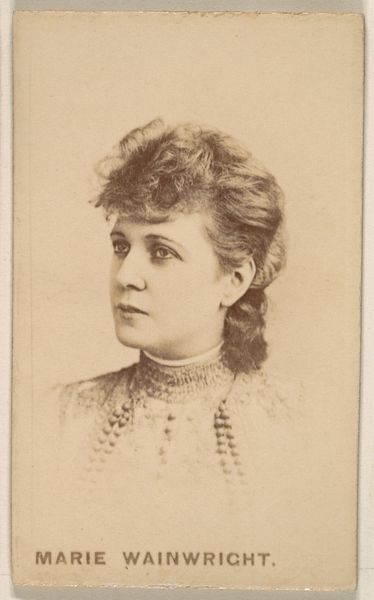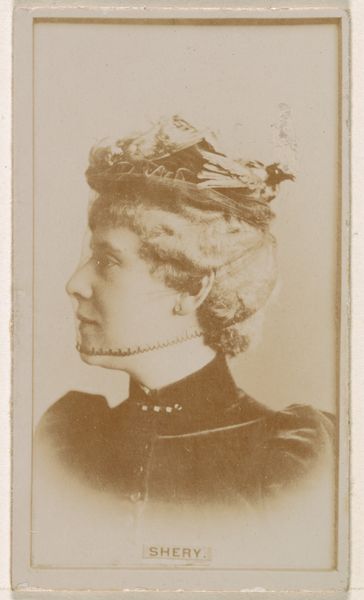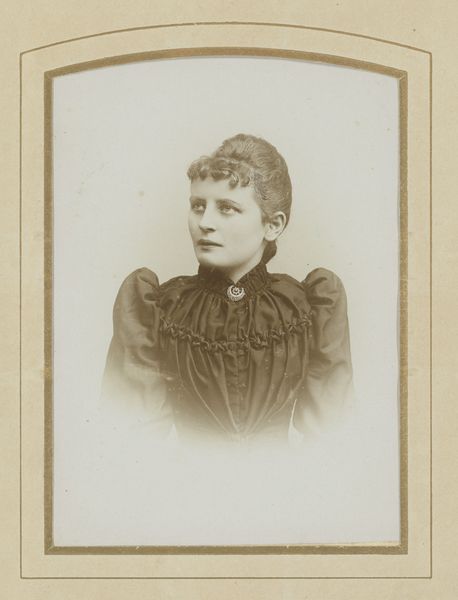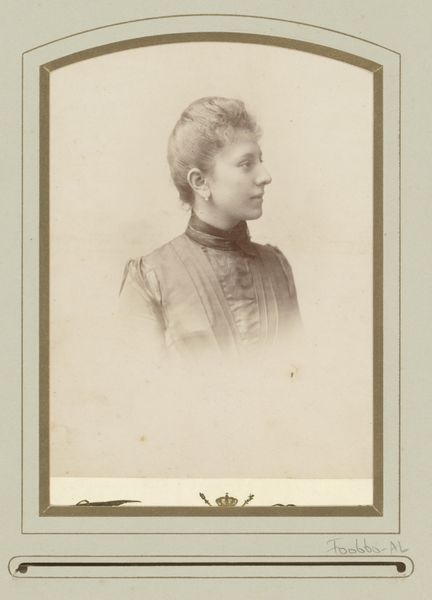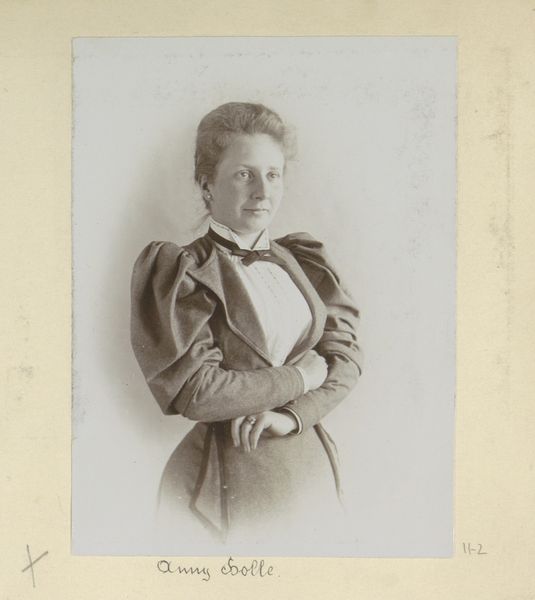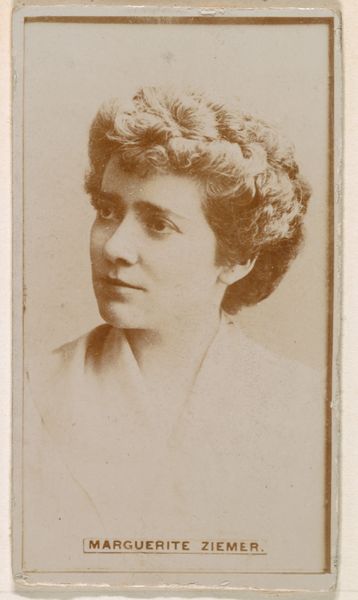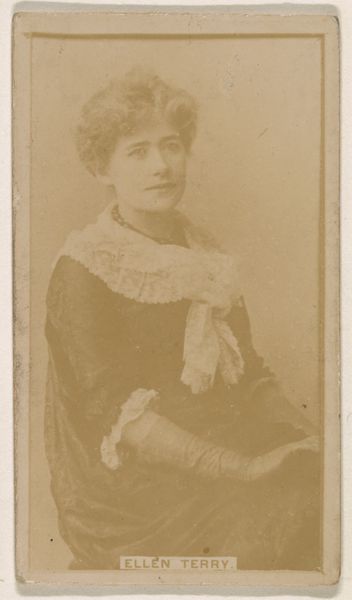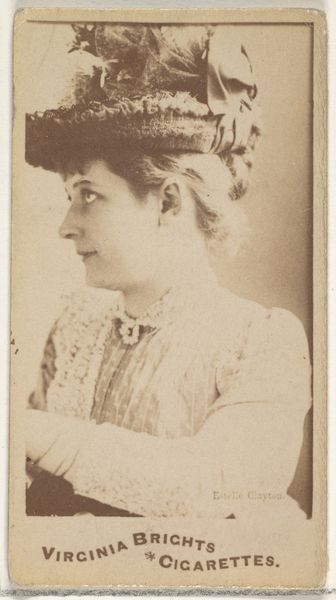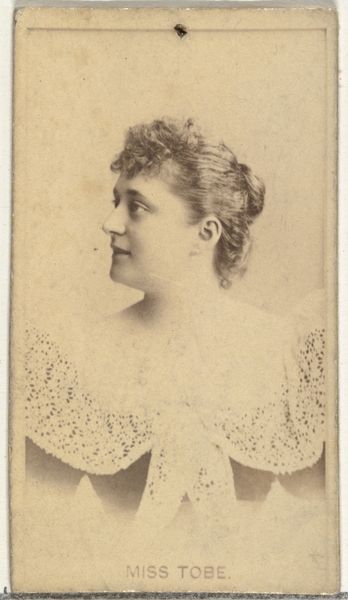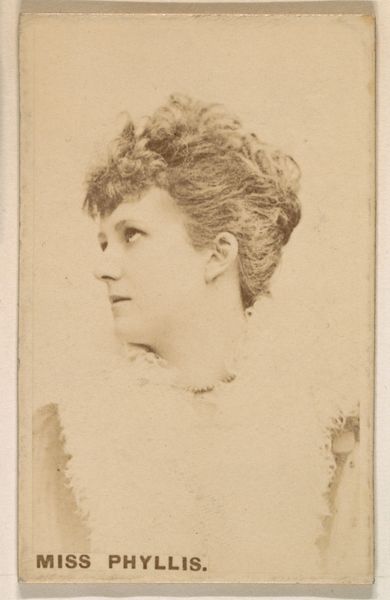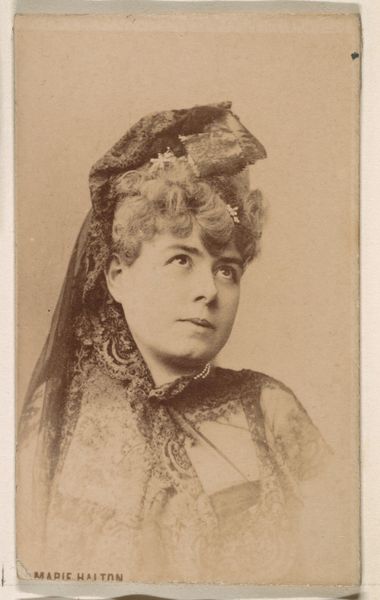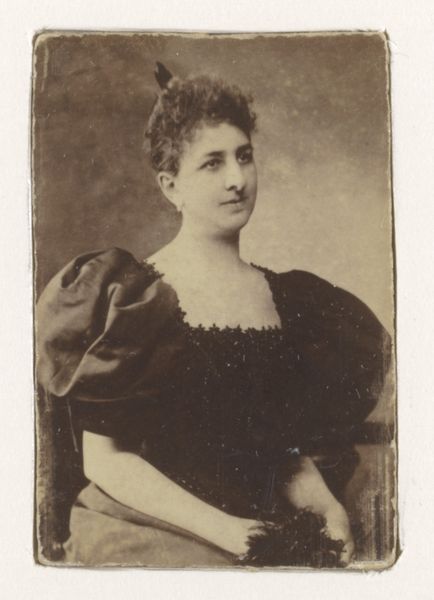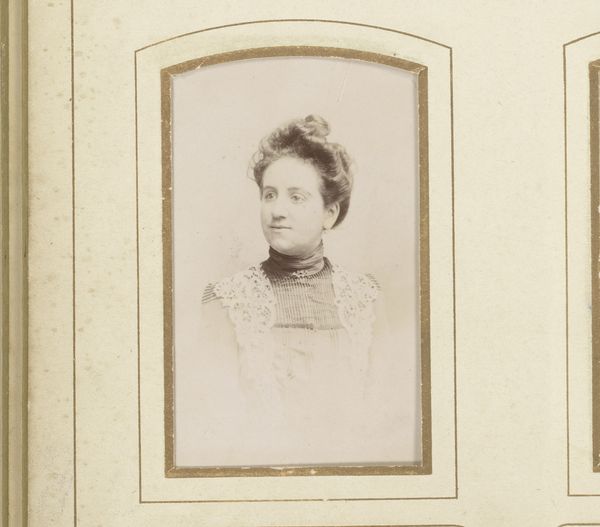
Fotoreproductie van een gefotografeerd portret van Pauline Holle before 1894
0:00
0:00
photography
#
portrait
#
still-life-photography
#
photography
Dimensions: height 109 mm, width 80 mm
Copyright: Rijks Museum: Open Domain
Curator: What a captivating gaze! The texture almost feels like it's whispering secrets of a bygone era, wouldn't you agree? Editor: It's interesting, the sitter's serene profile. Before 1894, this photograph presents a reproduction of a photographed portrait of Pauline Holle. It is a still-life with portrait elements that exudes formality typical of the era. What's your read on the social context? Curator: Absolutely, and there's an undercurrent of melancholy that tugs at the heartstrings. She almost seems like she's yearning, but toward what, I cannot quite name. Do you get the impression of suppressed desires? It looks so romantic in an unfulfilled kind of way! Editor: Such portraits reflected societal expectations. The elite portrait, for instance, wasn't just about appearances. Commissioning these images demonstrated wealth, status, and access to cultural institutions. The lace and tightly pinned hair reflect controlled respectability. Curator: You’re probably right—there's also this air of delicate resolve, you know? Maybe it’s her jawline, the gentle but strong definition, as she navigates the rigidity you mentioned. The silver U pin necklace and tiny earing stand out like a rebellious fashion moment in time. I want to believe Pauline has fire beneath the lace. Editor: Perhaps so, especially when these photographs are themselves reproductions, they signify how photography has developed into a method to document and disseminate ideas about who has historical noteworthiness. Consider the very material nature of it – a photograph of a photograph! It makes me wonder what happens to this imagery when photographs are no longer reproducible like this. Curator: Hmmm, I'd never really thought of it that way, as another layer to the portrait's story. Makes it like echoes in a hall of mirrors. Like memory… fractured but still resonating. What do you make of that writing around the perimeter? Almost like marginalia. Editor: Precisely, like archival evidence of its journey, like the writing is an open door for our interpretation of it, it reminds me that public art is not free from an engagement with audiences and context. We cannot look at a photograph as an isolated thing, despite the artist’s original intent. Curator: Yes. A single image frozen in time becomes something completely mutable and porous! It really makes you think about time itself.
Comments
No comments
Be the first to comment and join the conversation on the ultimate creative platform.
